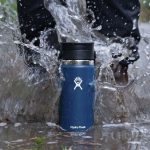The U.S. Fish and Wildlife Service announced today that nearly $5 million in grants will be going to six state fish and wildlife agencies to help conserve and recover Species of Greatest Conservation Need (SGCN) through the State Wildlife Grants (SWG) Competitive Program.
The SWG Competitive Program, part of the U.S. Fish and Wildlife Service’s State Wildlife Grants program, awards grants to projects that implement strategies and actions to conserve SGCN contained in approved State Comprehensive Wildlife Conservation Plans (also known as State Wildlife Action Plans). Funding for the grants comes from Fiscal Year 2010 appropriations for the SWG Competitive Program.
All 56 states and territorial wildlife agencies have approved State Comprehensive Wildlife Conservation Plans, which collectively provide a nationwide blueprint for actions to conserve SGCN. The plans were created through a collaborative effort among state and federal agencies, biologists, conservationists, landowners, sportsmen and the general public. Each plan was then reviewed and approved by a national team that included members from the Fish and Wildlife Service as well as directors from state wildlife agencies.
Funded projects include:
Arkansas Game and Fish Commission: Coordinated Multi-State Response to a Deadly, Emerging Threat White-Nose Syndrome in Bats This project will support a multi-regional coordinated response to white-nose syndrome (WNS), an emerging threat to cave-dwelling bats. Awarded funds will be used to detect the extent of WNS spread, conduct surveillance in cave habitats, develop state level response teams and implement WNS response and control strategies. State partners include Alabama, Delaware, Florida, Michigan, North Carolina, Tennessee, West Virginia and Wisconsin. In addition, Bat Conservation International (Austin, TX) will be a major partner.
Federal funds awarded: $998,834; non-federal match: $450,797
Iowa Department of Natural Resources: The Use of Fire and Grazing to Improve Grassland Habitats for Species of Greatest Conservation Need (SGCN) This project will develop an effective management framework for increasing the diversity of grasslands in working landscapes, thereby increasing the capacity of these areas to support viable populations of SGCN. Project activities will take place on both public and private lands.
Federal funds awarded: $732,904; non-federal match: $317,113
Maine Department of Inland Fisheries and Wildlife: The Conservation of Marsh Tidal Birds: Guiding Action at the Intersection of Our Changing Landscape This project will provide information for the New England and Mid-Atlantic Coast States to protect regionally important habitats for tidal marsh birds (including 26 SGCN, such as the American black ducks, Nelson’s sparrows and saltmarsh sparrows) and to provide a regionally consistent platform for tidal marsh monitoring in anticipation of sea-level rise and upland/watershed development. Primary state partners include Connecticut, Delaware and Maryland with work also occurring in Massachusetts, New Hampshire, New Jersey, New York, Rhode Island and Virginia.
Federal funds awarded: $760,202; non-federal match: $412,159
Michigan Department of Natural Resources: Oak Savanna, Pine Barrens and Jack Pine Restoration in Michigan and Ohio for Species of Greatest Conservation Need This project will restore and enhance 600 acres of oak savanna in Michigan and Ohio for the recovery and benefit of the Karner blue butterfly and restore 400 acres of pine barrens and jack pine forest in Michigan for the recovery and benefit of Kirtland’s warbler. In addition, the project will potentially benefit 188 SGCN that utilize oak savannas, pine barrens and jack pine forests. Forty-five percent (or 450 acres) of the project lands fall under private ownership. The states of Michigan and Ohio will partner to accomplish project goals and activities.
Federal funds awarded: $852,484; non-federal match: $383,000
Nebraska Game and Parks Commission: Nebraska Natural Legacy Project: Phase III This project will implement conservation partnerships and actions on private and public lands in Nebraska and South Dakota to enhance and improve native prairies, wetlands and woodlands for the benefit of SGCN in both states. This project will benefit Bell’s vireo, greater prairie chicken, ottoe skipper, swift fox and the Northern red belly dace. In addition, the project will implement adaptive management actions to better meet the needs of SGCN in Nebraska’s Natural Legacy Plan.
Federal funds awarded: $1,000,000; non-federal match: $333,333
Washington Department of Game and Fish: State Wildlife Grants Effectiveness Monitoring This project will implement the third phase of development of a spatially enabled decision support system. The system will facilitate strategic implementation of State Wildlife Grant program funds across multiple states, including Washington, Idaho, Montana and Oregon. This will allow states to share common data with their conservation partners and strategically prioritize actions across multiple states where appropriate, providing necessary information regarding effectiveness of conservation actions and expenditures of these dollars to the U.S. Fish and Wildlife Service.















